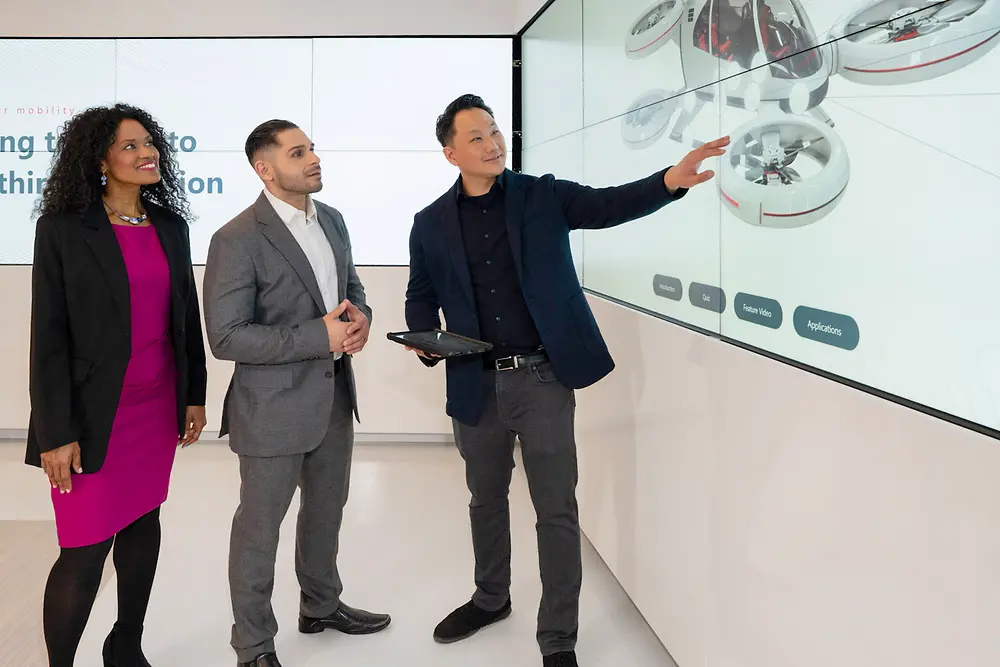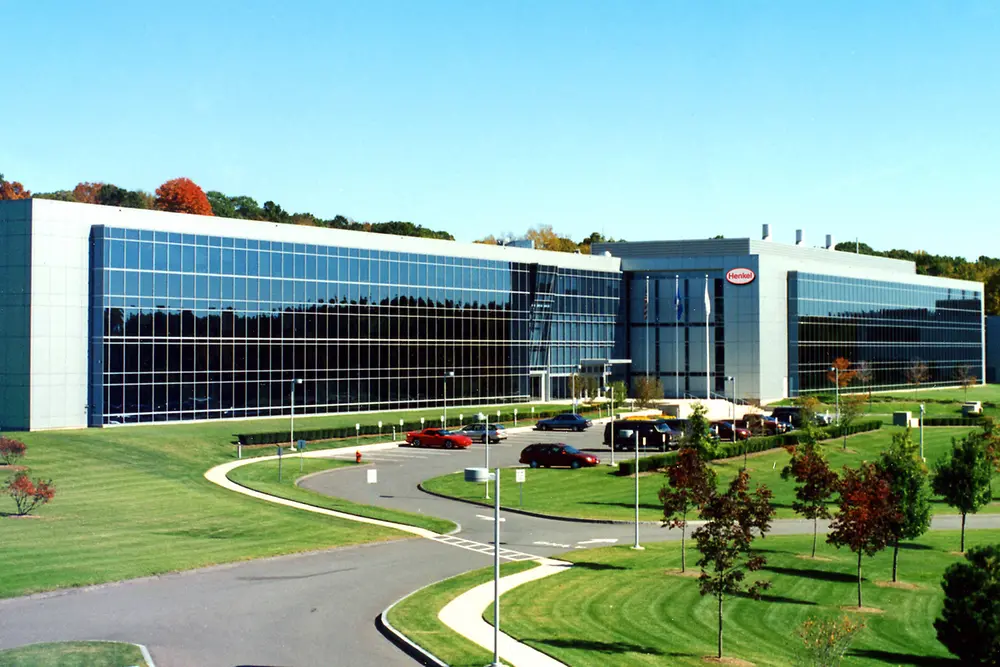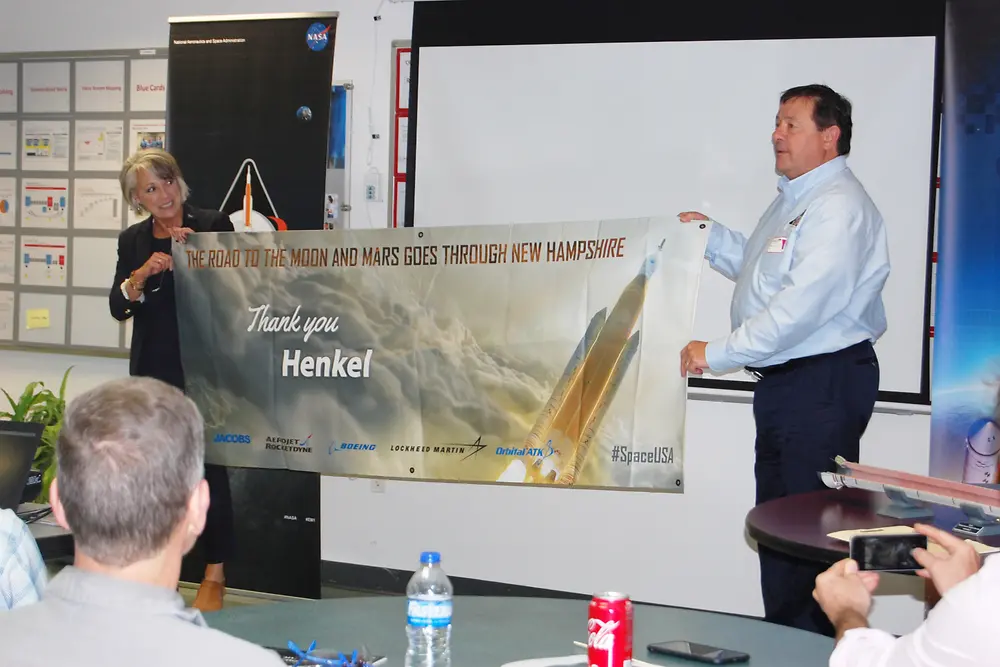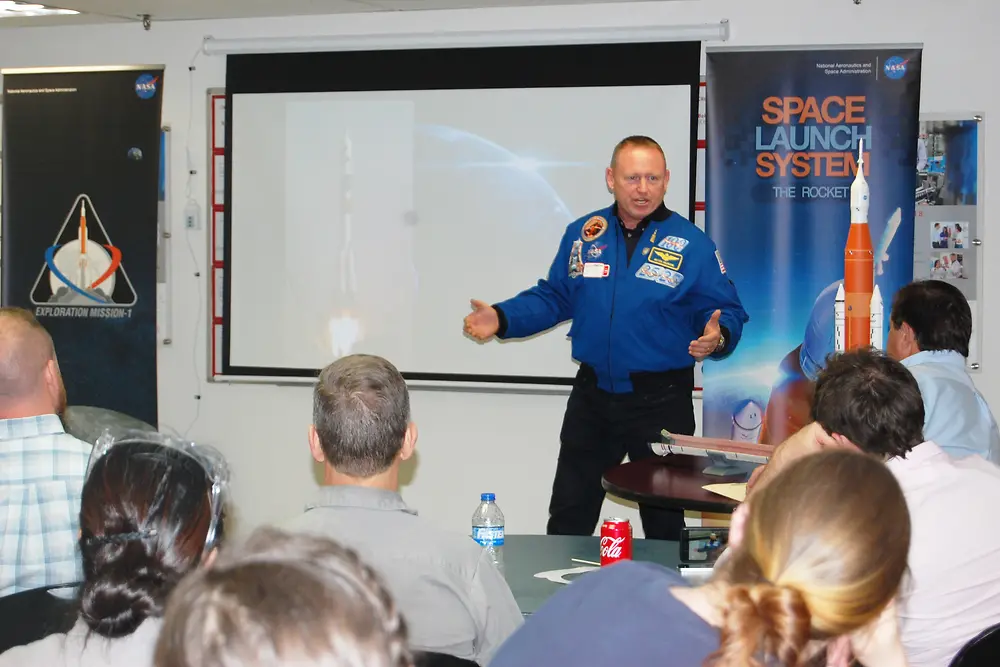The popular phrase “it’s not rocket science” isn’t a term used often at Henkel’s Seabrook adhesives technologies facility, because most days, production of materials directly related to rocket science is exactly what’s occurring. May 30 was no different, as representatives from NASA and partner company Orbital ATK visited the global company’s Seabrook location in New Hampshire that supplies critical materials to NASA’s new deep space rocket, the Space Launch System (SLS). Henkel manufactures adhesive products that are integral to Orbital ATK’s production of the SLS’s solid rocket boosters that help provide the power to launch the rocket. Managers of the SLS program and officials from Orbital ATK, Aerojet Rocketdyne and Boeing were onsite along with NASA astronaut Butch Wilmore to tell employees about the impact the products they manufacture have on the program overall.
“We’re proud to welcome NASA and Orbital ATK to Henkel’s facility here in Seabrook,” said Lynda Kassa, Director of Plant Operations for the facility. “To be able to see firsthand how our products are in use to further space exploration is incredible, and to be able to share this exciting day with our employees makes it extra special,” Kassa said.
Henkel’s Adhesive Technologies business unit is a supplier for Orbital ATK, a global leader in aerospace and defense technologies that designs, builds and delivers space, defense and aviation-related systems to customers around the world both as a prime contractor and as a merchant supplier. As a key contractor of NASA on the SLS project, Orbital ATK turned to Henkel as a leader in industrial adhesive technologies. The Henkel adhesive products on the SLS are used for creating, sealing, or repairing thermal protection systems at various points on the booster, including gap sealing, custom shaping to cover uniquely shaped components, and protecting structural metal that can reach temperatures of up to 5,800 degrees Fahrenheit when exiting the Earth’s atmosphere after take-off.
Wilmore met with the team and shared some of his experiences as an astronaut. He noted the importance of the Henkel products used on the SLS rocket, accentuating that the quality and dedication that’s put into these products contributes to the SLS program’s goal to extend human presence into the solar system beginning with bold missions to the Moon.







